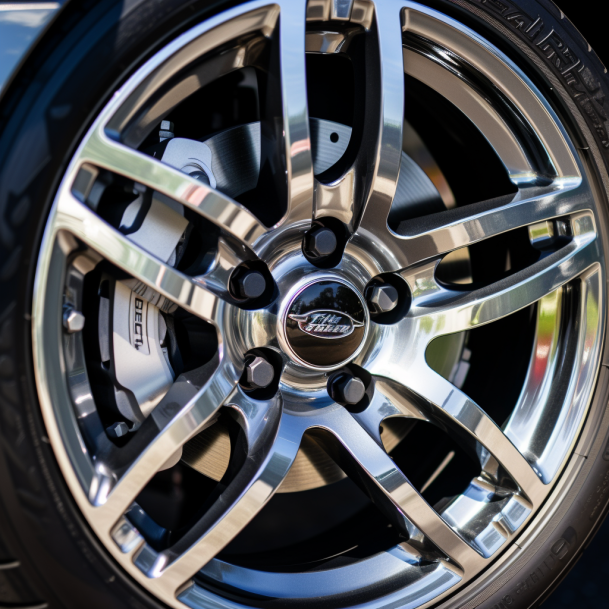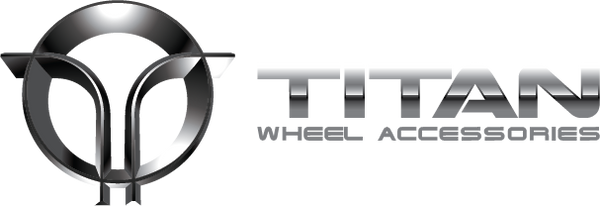
Do You Need To Modify Studs When Installing Wheel Spacers?
Are you considering installing wheel spacers on your vehicle? Before you proceed, it's crucial to understand the importance of modifying or replacing your wheel studs.
Wheel spacers are used to create extra clearance between the wheel and the hub assembly, allowing for a wider stance and improved stability. However, their installation may require adjustments to ensure a secure and proper fit.
To begin with, it is necessary to check the length and compatibility of your factory wheel studs. Depending on the type of wheel spacer you choose - bolt-on or slip-on - different modifications may be required.
Bolt-on spacers often necessitate cutting or replacing existing studs to prevent protrusion or contact with the back of the wheel. Slip-on spacers typically demand extended lug studs or bolts for sufficient thread engagement.
Considering these factors, it is vital to seek professional advice and installation assistance when dealing with wheel spacer modifications. By doing so, you can ensure a safe and effective upgrade that enhances both the aesthetic appeal and performance of your vehicle.
Key Takeaways
- Wheel spacers create extra clearance and improve stability by widening the stance.
- Factory wheel studs need to be checked for length and compatibility.
- Bolt-on spacers may require cutting or replacing existing studs.
- Slip-on spacers typically require extended lug studs or bolts.
Understanding Wheel Spacers and Their Purpose
So, you're wondering about wheel spacers and what they're all about? Let me break it down for you - when it comes to installing wheel spacers, sometimes you'll need to modify or replace your vehicle's factory wheel studs, depending on the type of spacer being used.
Wheel spacers are devices that fit between your vehicle's hub and the wheel assembly, pushing the wheel further away from the hub. This is done to achieve a wider track width, more aggressive stance or accommodate larger brakes or suspension components.
Bolt-On wheel spacers and adapters may require you to cut/trim down the factory wheel studs or replace them with shorter ones so that they don't protrude past the spacer face or touch the back of the wheel.
On the other hand, Slip-on spacers without pressed-in studs might necessitate replacing your lug studs or bolts with extended ones for proper thread engagement and tightening with at least 6-8 turns of the lug nuts.
Factors to Consider Before Installing Wheel Spacers
Before installing wheel spacers, it's important to take into account several factors.
Firstly, you need to consider the thickness of the spacer. Thicker spacers can cause rubbing on body and suspension parts and may require additional modifications.
Secondly, check the bolt pattern compatibility between your vehicle and the spacer. Ensure that both have the same number of holes and match in terms of diameter and spacing.
Thirdly, consider the wheel offset. Spacers can change the position of your wheels relative to the hub assembly, which can impact handling and clearance.
Lastly, evaluate the stud length. Depending on the type of spacer, you may need to trim or replace your factory studs with shorter or extended ones for proper installation.
Remember that neglecting these factors could lead to safety issues and compromise performance, so it's crucial to carefully assess them before proceeding with wheel spacer installation.
Checking Wheel Stud Length and Compatibility
To ensure proper installation, it's important to assess the length and compatibility of your wheel studs when checking for wheel spacer suitability.
Start by measuring the length of your factory wheel studs. If they protrude past the face of the spacer or touch the back of the wheel when installed, modification is necessary. You can either cut/trim them shorter or replace them with shorter studs that are compatible with your vehicle
Additionally, check if your vehicle's lug studs or bolts provide enough thread engagement for the lug nuts when using slip-on spacers. Ideally, there should be 6-8 turns on the lug nuts for proper tightening. If not, consider replacing them with extended studs or bolts to ensure adequate thread engagement and prevent any safety issues during use.
Proper assessment and modification of wheel studs is crucial for a secure and effective wheel spacer installation.
Methods for Modifying Studs
One option for altering the length of your vehicle's factory wheel studs is to either cut them shorter or replace them with shorter ones before installing wheel spacers. Cutting the studs can be done using a saw or grinder, but it requires precision and caution to ensure that the cuts are clean and accurate. It's important to measure the required length carefully and make sure that there is enough thread engagement left after cutting.
Alternatively, replacing the studs with shorter ones is another method. This involves removing the old studs by pressing them out with a hydraulic press and then pressing in the new shorter studs. Whichever method you choose, it's crucial to follow proper installation techniques to maintain the integrity and safety of your vehicle's wheels and spacers.
Seeking Professional Advice and Installation
If you want to ensure the proper installation and safety of your vehicle's wheels and spacers, it's highly recommended that you seek professional advice and assistance.
A professional mechanic or technician will have the knowledge and expertise to assess your specific vehicle and spacer requirements. They can provide guidance on whether or not modifications to your wheel studs are necessary, as well as recommend the appropriate methods for modification.
Seeking professional help ensures that any modifications made to your vehicle's studs are done correctly, minimizing the risk of damage or failure. Additionally, professionals have access to specialized tools and equipment that may be required for stud modification. This ensures a precise and secure installation, maintaining the integrity of your vehicle's wheels and spacers for optimal performance and safety on the road.
Frequently Asked Questions
Can wheel spacers be installed without modifying the factory wheel studs?
For bolt-on wheel spacers, that will mostly depend how the thickness of spacer that you choose and the length of your vehicle’s stock wheel studs. As long as your vehicle’s studs are shorter than the spacer is thick, the studs would not need to be modified. Ex: Your vehicles studs measure 1.5” from the base of the hub and you are installing a 2” thick wheel spacer.
For slip-on spacers, as long as you are able to get enough thread engagement (typically 6-8 tuens on the lug nuts or bolts,) with the spacers installed, you would not need to modify the studs.
How do I determine the appropriate length for replacement or modified studs when installing wheel spacers?
To determine the appropriate length for replacement or modified studs when installing wheel spacers, consider the thickness of spacer that you chose. This measurement will help you determine the necessary stud length to ensure proper fitment and avoid any protrusion or contact issues.
Are there any specific tools or equipment required for modifying wheel studs?
The specific tools and equipment required for modifying wheel studs include a cutting tool such as a grinder or saw, measuring tools like calipers or rulers, and replacement studs or bolts. It is important to have proper safety gear such as gloves and eye protection while performing this task.
Is it necessary to seek professional advice or assistance for installing wheel spacers and modifying wheel studs?
It is recommended to seek professional advice or assistance when installing wheel spacers and modifying wheel studs. This ensures that the process is done correctly, minimizing the risk of damaging the vehicle or compromising safety.
Conclusion
In conclusion, when installing wheel spacers, it's crucial to assess the length and compatibility of the factory wheel studs. Depending on the type of spacer being used, modification or replacement may be necessary. This ensures that the studs don't protrude past the face of the spacer or come into contact with the back of the wheel, preventing any potential damage. It's important to seek professional advice and installation to ensure a secure and proper fit for your vehicle's wheels.
